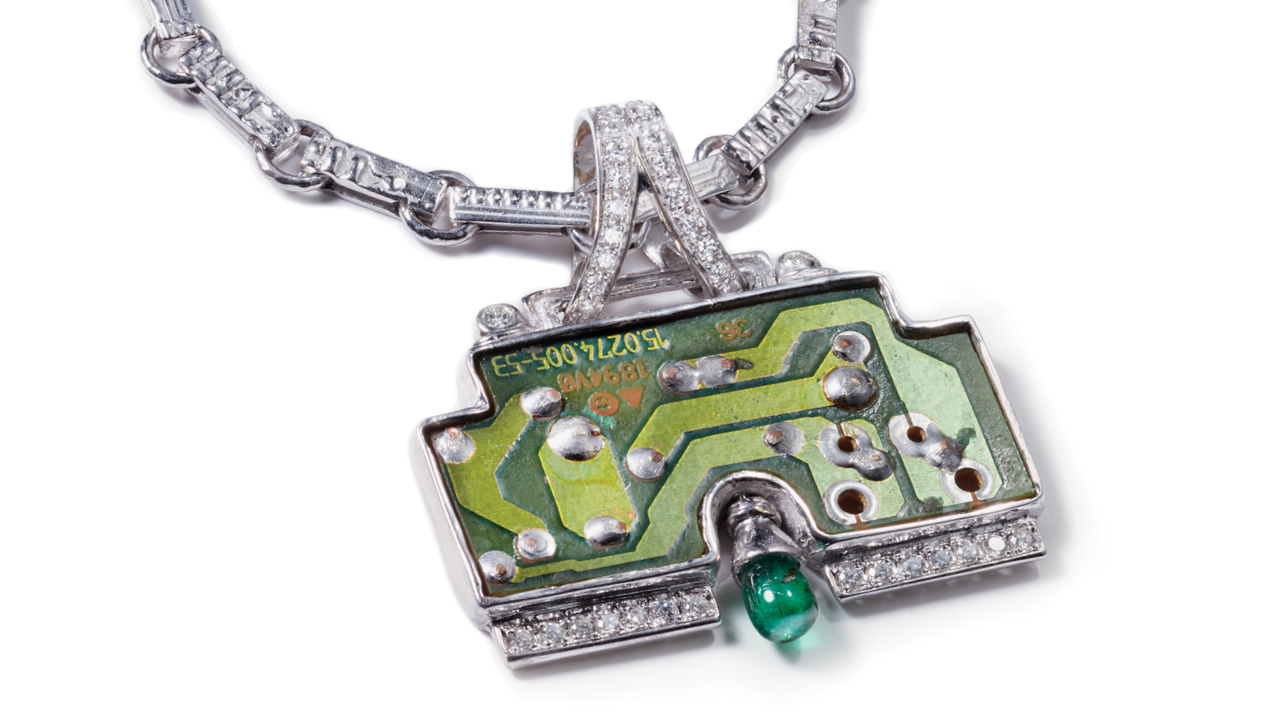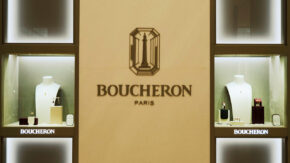With sustainability rapidly becoming a top factor in people’s buying choices — McKinsey & Company predicts it will influence 20% to 30% of jewelry purchases by 2025 — both heritage brands and new companies are adopting more environmentally friendly practices and looking to minimize their impact on the planet.
Online vintage-jewelry platforms such as 58 Facettes and Castafiore have mushroomed in the last five years, and trade fairs that feature estate pieces have multiplied. GemGenève has begun holding two shows a year to coincide with the most prominent auction sales in May and November, while the Lapada antique fair is returning to London in September after closing during the pandemic. These ventures cater to buyers young and old who consider pre-owned goods a more responsible choice.
The number of such buyers is growing. The vintage luxury goods market was worth €43 billion in 2022, twice as much as in 2017, according to a Bain & Company study. “Buying new is not cool anymore,” said Fabienne Lupo, founder of the vintage-focused ReLuxury show, at the event’s inaugural edition in Geneva last year.
Circular reasoning
As for brands, Chopard has led the way in responsibly sourced gold, and at the Watches & Wonders show last spring, it unveiled a new proprietary alloy it will be using in its timepieces: Lucent Steel, which consists of up to 80% recycled material.
Meanwhile, a new cohort of businesses has made sustainability a founding principle. Denmark-based Kinraden uses only recycled gold and repurposes Mpingo blackwood as an alternative to diamonds, recovering the dense African wood from musical instruments and cutting it like gemstones. London-based jeweler Oushaba creates opulent designs out of electronic waste such as mobile phone circuits and charging cables.
One jewelry venture that employs exclusively recycled materials is Rouvenat, a brand originally founded in the early 19th century. CEO Marie Berthelon Gaviard revived the maison last year in cooperation with LuxImpact, a group that relaunches historical French jewelry houses. Rouvenat’s entire business model is circular; it buys “diamonds and gemstones from the safes around the world and [invites] clients to bring their stones,” explains Berthelon Gaviard.
The brand designs its rings from the start with a gap where the center stone would be, ready to accommodate any pre-owned gems that come in. For its packaging, it recycles boxes from other jewelers, dressing them up in a branded graffiti-style cover. Even the furniture in the Rouvenat boutique is recycled.
RELATED READING

Questionable benefits
Using recycled resources takes pressure off the environment, since extracting metals and gems is the main way the jewelry industry impacts the planet. Some 95% of the trade’s carbon dioxide emissions come from the production of metals, according to Massachusetts Institute of Technology (MIT) engineering professor Yang Shao-Horn.
Speaking at the recent State of the Art Jewelry Summit at Harvard, she added that gold, silver and platinum accounted for a much higher carbon footprint than iron ore or aluminum.
Recycling gold is also more efficient than mining it, says Eliza Walter, founder of jewelry brand Lylie, which manufactures its jewelry out of e-waste. “One tonne of the earth’s core yields fewer than 30 grams of gold, while one tonne of electronic waste can get 300 grams,” she says.
Still, that model comes with challenges. Kinraden struggled for years to scale its business before finding a reliable source of recycled gold. And Charlie Betts, whose family has been supplying gold since the 18th century, advocates taking a critical approach to recycled metals. If one doesn’t know the metal’s origins, there’s a chance it could be tainted with environmental or human-rights violations. Instead, Betts stresses the need to improve mining operations and traceability.
Tiffany Stevens shares that view. The CEO and general counsel of the Jewelers Vigilance Committee (JVC) points to illegal gold-mining operations in South America with links to drug trafficking. The products of these ventures often end up bearing “recycled” labels, she says, with both sellers and buyers none the wiser.
Proving their metal
To combat this problem, Betts’s company launched the Single Mine Origin (SMO) kitemark — which certifies that the metal was responsibly extracted from a single mine — and the new AgAIN program for silver, which the company retrieves from X-ray films. Designers such as London-based Emefa Cole opt for Betts’s products as more responsible and traceable choices.
One of the main goals of any industry to reduce its impact is to decouple the use of resources from growth.
Thinking of the long-term implications is also important, according to Federica Levato and Matteo Capellini, respectively senior partner and expert associate partner at Bain & Company.
“One of the main goals of any industry to reduce its impact is to decouple the use of resources from growth,” they tell Rapaport in a joint message. “In this sense, using waste as a feedstock to new, valuable products is a laudable initiative. However, we should also look at the end of life of the products manufactured with those resources to be sure that they can be recycled as well.”
Rethinking precious: Boucheron and Cofalit
One of the most thought-provoking uses of waste in jewelry is the Jack de Boucheron Ultime capsule collection that Boucheron released last year. The three-piece line features Cofalit, a material made from vitrified asbestos — the cancer-causing substance that was once common in the building industry and is now banned. While that may sound alarming, Cofalit is safe; the material undergoes processing to render it harmless before it goes into jewelry.
Boucheron’s aim with the collection was to redefine notions of preciousness by transforming a material that had no use into something that had value. “Cofalit is the complete opposite of what is considered precious in the collective imagination,” says creative director Claire Choisne. “I appreciate the radicality and aesthetic appearance of this recycled industrial byproduct, which has reached the end of its life cycle. I took inspiration from the fact that this material is deemed to have no further utility. I wanted to restore its value in a lasting way through this capsule collection.”
This is not the first time Boucheron has employed unusual materials in its jewelry. A few years ago, it encased aerogel in rock crystal and made it the center stone of a high-jewelry necklace. In its newest collection, More Is More, the search for a material lighter than gold and titanium led Boucheron’s artisans to set diamonds in magnesium. Another recent initiative is the new packaging for the house’s iconic Quatre design. Consisting of just two materials — aluminum and wood — these boxes are four times lighter than its classic ones.
“Turning waste into a luxury product is risky, but also avant-garde,” comments jewelry brand consultant Valery Demure. “Aren’t diamonds simply carbon atoms, after all?”
Some industry insiders have questioned the wisdom of spotlighting a substance like asbestos, which has so many negative associations — especially in a product like jewelry, for which the emotional component is a key driver of purchases. Nevertheless, the Cofalit experiment is a testament to Boucheron’s environmental commitment.
Main image: Ascent necklace from the Connection Salvaged collection by Oushaba. (Oushaba)
This article is from GIA’s Spotlight on Sustainability special report. View other articles here.
Stay up to date by signing up for our diamond and jewelry industry news and analysis.




